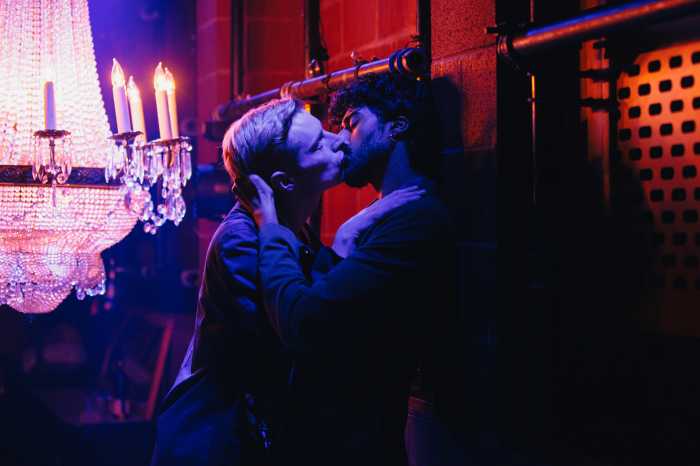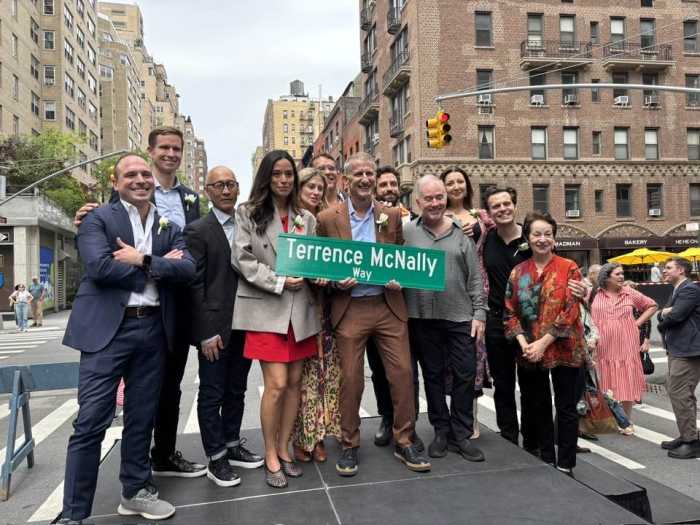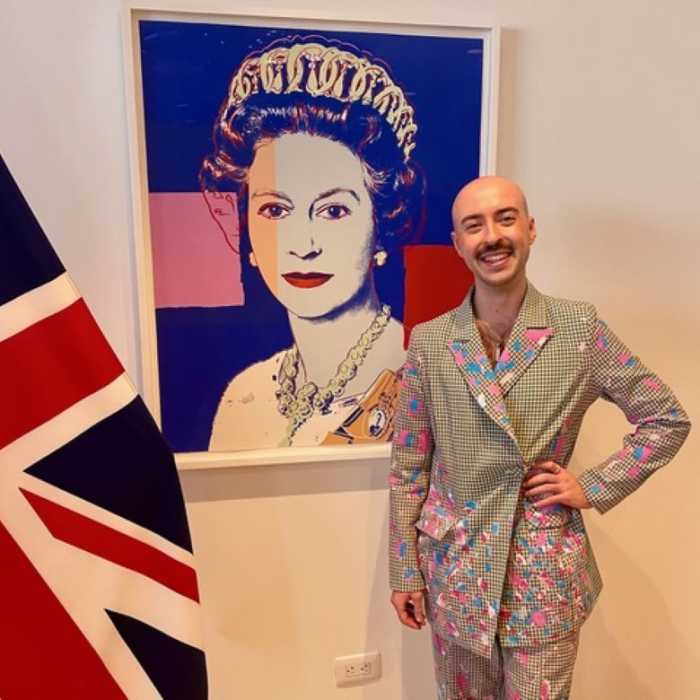BY DAVID NOH | “How Does the Show Go On: An Introduction to the Theater” is a captivating, informative book – great for kids and adults alike – written by someone who really knows his stuff, Thomas Schumacher, president of Disney Theatrical Group.
On the eve of the opening of his latest opus, “The Little Mermaid,” I met with Schumacher in his cozy, memorabilia-filled office and found him to be as warmly enthusiastic and still as stage-struck as anyone first getting off a bus at the Port Authority blocks away. He began his stage career as a kid, in school and community theater, in his native San Mateo, California.
In 1987 he joined Disney, where he produced “The Rescuers Down Under” and “The Lion King,” and supervised some 20 feature films, including “Mulan,” “Tarzan,” Pocahontas,” and “Tim Burton's The Nightmare Before Christmas.” Transferring to Broadway, he produced “King David,” “The Lion King,” “Aida,” “Tarzan,” and “Mary Poppins.”
“I wrote the book,” he explained, “because it was the book I wanted as a kid and because I could do it for all the access I had to all these people working on the shows. It sells for just 20 bucks and that's because it's based on my stage work at Disney and we own all this artwork. If anyone else tried to do this book, they couldn't afford to.
“Some journalist, I think, was trying to be sweet when he wrote, 'After talking to Schumacher, you even believe that he might have written his own book,' but who do you think wrote it? My collaborator, Jeff Kurti, and I have known each other since we were Olympic staffers in 1984 and he has written a lot of books about Disney. I said, 'I have an idea for this book but don't know how to frame it,' and it was his idea to do the whole artifact idea of the book [which is rife with fun novelties like a real Broadway show ticket, a Playbill, 'Tarzan' script pages, and Julie Taymor's 'Lion King' costume sketches]. This was a real hands-on thing, a two-year project I wrote while we were in Amsterdam for two months, mounting a new production of 'Tarzan' and on long plane rides from Johannesburg to the Netherlands.”
Schumacher makes it clear that this is not a how-to book:
“It's not intended to be a guide but rather shows you how it does happen. When people go to theater, they see the actors but have no idea what is behind them. Unless someone tells you what a wardrobe person does you don't realize that they're not just pressing clothes, but are a life force for the actor. What are props, electricians, carpentry? In lighting, how does the combination of colors create light, or the fact that you can light a costume, a set, and even the air. Or facts, like, you can't make a short-haired wig.”
Asked how he learned all this stuff, Schumacher recalls his own childhood: “When I was 13, I had a crescent wrench on a rope tied to my belt so if I dropped it, it wouldn't hit anybody below, standing on a 20-foot ladder, hanging lights at the recreation center, being taught by a woman who had a master's degree in lighting design from San Jose State. This could never happen today, when everything is so programmed for kids and we're so worried about liability. If I fell off one of those ladders, my mom would have been mad – at me!
“We would stay up until 2 a.m. in our local theater, doing a tech rehearsal until it worked, but we also got good grades and were active in our community. Today, the 25-year-old who comes home after college is the kid who was programmed from soccer to piano to ballet class. They never managed their own day, they never worked. I was getting a paycheck from when I was 15 years old, sometimes in very menial jobs.”
People now seek out Schumacher after the show for him to sign their copy of the book, already in its second printing, which is sold in the lobby. He's happy to do this.
“They figure for some reason, it adds value to the book, but for the most part, they want some connection with you, to tell you about their experience with one of the shows. Joel Grey recently moderated a publicity discussion with me in California and asked me if I remembered when we met. He said, 'We met backstage at the Beverly Hills Hilton. Tipper Gore introduced us,' and I said, 'That was actually the second time we met. The first was at the stage door of the Circle Star Theater in San Carlos, California. You were performing there and I waited for you to sign my program.'
“I was so excited. Now, did I care that I got Joel Grey's signature on a program, which by the way I still have? No, I cared that I had a chance to meet him. This woman recently sent me a letter saying, 'We went to see “The Little Mermaid” and the highlight of our trip was meeting you and my children, who each bought with their own money a copy of your book. You wrote something different in each and talked to them and looked them in the eye. My 13-year-old son slept with your book under his pillow.'”
Not all of Schumacher's mail is so heartwarming.
“One woman wrote, 'Walt would be rolling in his grave…' A house manager had stopped her from taking photos and confiscated her camera, which he gave back to her after the performance, but she described him as very brusque. We'll never know what really happened, but she was blaming Disney for the fact that a house manager who works for a theater that booked a tour of 'Lion King' was rude to her about her taking pictures during the show. Because she doesn't understand that 'no flash photography' meant no photography at all – an ambiguous message but you'd think she'd figure it out – obviously hadn't read my book [which contains a vital section about theater etiquette].”
As for “The Little Mermaid,” Schumacher says, “I can't tell you what you'll think, but we've achieved what we wanted to. We completely changed the ending because it's 18 years after the movie and you can't have a prince go rescue Ariel. It's not right today, and that's addressed in the show. Ursula has another song and reprises it. Ariel gets her big song and new material.
“Titus Burgess and Norm Lewis are wonderful. Sierra Boggess [as Ariel] is the real deal and it's not easy for her. Everyone thinks she's such a natural, she was born to play it. No – she's an actress and she's doing a beautiful job. And Sherie Rene Scott [as Ursula], who, it's no secret, is a close friend of mine – I'm just so happy with what she's doing in the show and love what it looks like. I love everything about it and the response has been overwhelming.
“Now, I have no idea what will happen when Friday [review day] comes. People who are cynical and don't like enchantment or happy endings may not like it, but I'd be happy to pull out the reviews of 'Beauty and the Beast' for you, and you definitely would have been happier to be an investor in that than 'Passion' that same year. I, myself, have many favorite things in the whole world that are not popular. I get it, but I also love pop culture and I love this stuff. You'll always be surrounded by naysayers and negativity; cynicism is a very comfortable place for a lot of people to stay in. I'm just lucky that when they call out, 'Bitter party of one!' I'm not the first guy in line.”
Schumacher's entire career is powerful proof that being gay is no handicap in the corporate world, at least in the Magic Kingdom.
“Someone mentioned surprise online somewhere that I was gay. I'm, like, post-gay. When I came to Disney 20 years ago, already as a 30-year-old out gay man with some reputation, I thought I would have trouble fitting into this stuffy, uninviting place. I was completely uneducated, with a lot of preconceptions, but I was gigantically welcomed into the company by Michael Eisner and Jeffrey Katzenberg. I remain friends to this day with Roy Disney – he and his then-wife Patty embraced me and my partner, Matthew White. He's a big, fancy interior designer who's been in Architectural Digest eight or nine times. With his business partner, Frank Webb, he does houses on the East and West Coasts and they also did some of the public rooms at the Carlyle Hotel last year, as well as the patron reception lounge downstairs in the basement at Studio 54. We're about to celebrate our 26th anniversary.
“I did indeed have some rough times in the business that are pretty well documented. I went through a period of intense hate mail and some pretty heightened security, but that was sort of expected, I suppose. But I got nothing but respect from my colleagues with the expectation that I would do my job and deliver. There was absolutely no bad moment, but then I never allowed that moment to happen. When I went to my first corporate retreat 19 years ago, it said 'Spouses are invited' and I said, 'Matthew, you need to come.' People were shocked, and in that I would argue lies power, because there's power in the truth and being honest.
“I have never for a minute felt that being a gay person was a limitation – as an adult. As a kid I was, of course, traumatized. Owning this truth actually suggests a message of security to other people like, 'He's so comfortable with it, I guess I'm comfortable, too.' And if they weren't comfortable, then either they had to get out of the room, or get comfortable with it.
“I've been interviewed so often about this and there's never been a question between me and the leadership of this company. I never asked for permission to be who I am, because I don't think you're supposed to do that. This company has embraced me always, and here I am, 20 years later, the gay guy at Disney.”

































